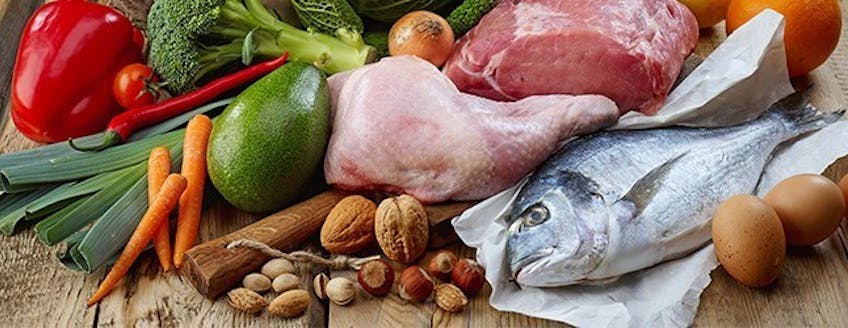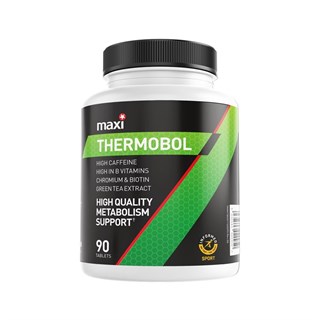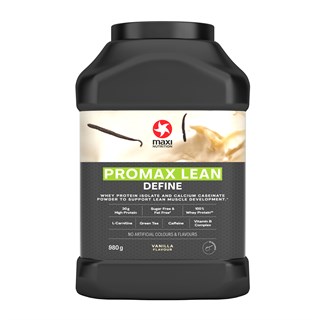The following guide by Maximuscle will tell you everything you need to know about the paleo diet; a way of eating that has more than stood the test of time.
LEARN ABOUT THE HISTORY OF PALEOWhat is the Paleo Diet?
The paleo diet is eating as our ancestors did, following a diet as hunter-gatherers. It's avoiding processed foods, grains and dairy but eating lean meat, seafood, vegetables, fruit and nuts.
As a guide, here are the macronutrient levels of a paleo diet vs Dietary Reference Intakes (DRIs):
| Nutrients (% of total unless stated) |
Paleo | Current DRIs |
| Carbohydrate | 35-65 | 45-65 |
| - of which sugars | 2 | <10 |
| Protein | 25-30 | 10-35 |
| Fat | 20-35 | 20-35 |
| - of which saturates | 10 | <10 |
| Fibre | >70g/d | 38g/d males 25g/d females |
| Sodium | <1000mg/d | 1500mg/d |
| Potassium | 7000mg/d | 4700mg/d |
| Vitamin C | 500 mg/d | 90mg/d males 75mg/d females |
| Vitamin D | 4000IU/d | 1000IU/d |
| g/d - grams per day , mg/d - milligrams per day, IU/d - international units per day Food and Nutrition Board, Institute of Medicine, 2005 |
||
What is Paleo Food?
Followers of the diet plan can enjoy a number of paleo foods, as the below chart illustrates:

Nutrition for Endurance Sports
The nutritional requirements will depend upon the exercising demand and training goal. Below are the suggested guidelines for nutritional focus based on a periodised training cycle. All macronutrients are range amounts due to variable event distance and training intensity.
Paleo for Athletes
To date there is no published research on the effects of a paleo diet on endurance athletes' performance. However, a paleo diet plan may still offer some benefits. Let's compare the generic guidelines for performance nutrition and the paleo diet guidelines.
| GENERAL PREPARATION | SPECIFIC PREPARATION | TAPER / COMPETITION | TRANSITION | |
| T R A I N I N G |
High training volume (5 - 12 hr/week) / lower training intensity Aerobic development |
Maintained to lower volume (4 - 10 hr/week) / higher training intensity Anaerobic development |
Lower volume (3 - 8 hr/week) / high training quality and quantity Race specific |
Volume and intensity very low (2 - 4 hr/week) Rest and recovery |
| N U T R I T I O N |
High caloric load for volume Daily Macro Target 6 - 12 g CHO/kgBW/d 1.5 - 1.7 g PRO/kgBW/d 1.5 - 2 g FAT/kgBW/d |
High caloric load during intense training Daily Macro Target 6 - 12 g CHO/kgBW/d 1.5 - 1.7 g PRO/kgBW/d 1 - 1.5 g FAT/kgBW/d |
Nutrition during racing Daily Macro Target 6 - 10 g CHO/kgBW/d 1.5 - 1.7 g PRO/kgBW/d 0.8 - 1.2 g FAT/kgBW/d |
Nutrition whilst resting and recovering Daily Macro Target 4 - 6 g CHO/kgBW/d 0.8 - 1.2 g PRO/kgBW/d 1 - 1.5 g FAT/kgBW/d |
N.B. Adapted from Nutrition for power sports - Stellingwerff, Maughan & Burke, 2011
X/kgBW/d = Nutrient per kg of body weight per day
How Does the Paleo Diet Compare?
| Nutrient | Performance Nutrition for Endurance Performance | Benefits of Paleo Diet | Negatives of Paleo Diet |
| Carbohydrate | A high CHO diet | Low GI sources, low in sugar and rich in micronutrients | Low in starchy calorie yielding sources |
| Protein | Variable protein content but higher than the DRI | Plentiful sources of protein | Animal sources often have high saturated fat levels |
| Fat | Similar to DRIs although potentially lower in the taper phase | Fish sources boost essential fatty acids and a favourable Omega 6 to 3 ratio | High saturated sources of food |
| Sodium & Potassium | Balanaced to support training, Higher than the DRI | Lower levels are recommended as a daily intake | Not supportive of higher levels for athletes |
| Vitamin D & Calcium | Higher than the DRI | Fruit and vegetables provide a rainbow of vitamins and minerals | Food sources are low in vitamin D and calcium |
| Vitamin C | Higher than the DRI | Over 400mg higher than the DRI | None |
| Adapted from Konner & Eaton, Paleolithic Nutrition, 2010 | |||
Other Considerations:
Benefit - Paleo is anti-processed food which may limit the consumption of added sodium, sugars and trans fats
Benefit - Paleo is easy to follow with lots of food varieties and natural healthy choices
Negative - Paleo can be an expensive and challenging diet with organic and fresh food choices
A paleo diet offers several benefits. However, with the lack of applied research and with obvious dietary gaps, to fully commit to such a diet may impact endurance performance.
Not sure if the paleo diet is right for you? Find the perfect plan by reading our in-depth diets explained guide.

















